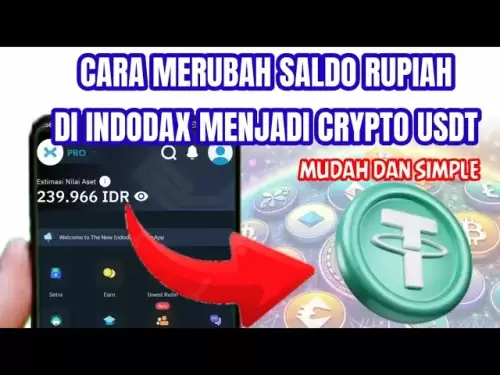-
 Bitcoin
Bitcoin $106,731.2224
-1.05% -
 Ethereum
Ethereum $2,444.9804
-1.20% -
 Tether USDt
Tether USDt $1.0003
0.01% -
 XRP
XRP $2.1882
0.09% -
 BNB
BNB $651.1435
-0.61% -
 Solana
Solana $148.3252
-2.09% -
 USDC
USDC $1.0000
0.01% -
 TRON
TRON $0.2787
0.55% -
 Dogecoin
Dogecoin $0.1598
-3.16% -
 Cardano
Cardano $0.5520
-2.43% -
 Hyperliquid
Hyperliquid $39.0960
-2.64% -
 Bitcoin Cash
Bitcoin Cash $516.9519
2.98% -
 Sui
Sui $2.7011
-2.95% -
 Chainlink
Chainlink $13.0582
-1.71% -
 UNUS SED LEO
UNUS SED LEO $8.9250
-2.53% -
 Stellar
Stellar $0.2359
-0.18% -
 Avalanche
Avalanche $17.3856
-3.73% -
 Toncoin
Toncoin $2.8095
-3.56% -
 Shiba Inu
Shiba Inu $0.0...01121
-1.95% -
 Litecoin
Litecoin $85.2795
-0.85% -
 Hedera
Hedera $0.1471
-2.15% -
 Monero
Monero $319.8004
1.12% -
 Dai
Dai $1.0001
0.01% -
 Ethena USDe
Ethena USDe $1.0001
0.02% -
 Bitget Token
Bitget Token $4.5344
-1.07% -
 Polkadot
Polkadot $3.3224
-2.96% -
 Uniswap
Uniswap $6.9697
-2.75% -
 Aave
Aave $266.1658
-2.25% -
 Pepe
Pepe $0.0...09414
-3.41% -
 Pi
Pi $0.4913
-3.29%
Does Exodus wallet support staking?
Exodus wallet supports staking for cryptocurrencies like Tezos, Cosmos, and Algorand, allowing users to earn rewards directly through its user-friendly interface.
Apr 05, 2025 at 08:00 pm

Does Exodus wallet support staking?
Exodus wallet, a popular choice among cryptocurrency enthusiasts, has garnered attention for its user-friendly interface and robust features. One question frequently asked by users is whether Exodus supports staking. This article will delve into the specifics of staking within Exodus, exploring which cryptocurrencies are supported, how to stake them, and the benefits and considerations of staking through this wallet.
What is Staking?
Staking is the process of holding funds in a cryptocurrency wallet to support the operations of a blockchain network. By staking, users can earn rewards, typically in the form of additional cryptocurrency. This process is integral to proof-of-stake (PoS) and similar consensus mechanisms, which are more energy-efficient compared to traditional proof-of-work systems.
Does Exodus Wallet Support Staking?
Yes, Exodus wallet does support staking, but it is important to understand the specifics of how this feature works within the platform. Exodus offers staking for a select number of cryptocurrencies, and the process can vary depending on the asset in question. Users can stake their assets directly through the Exodus interface, making it a convenient option for those looking to earn passive income on their holdings.
Which Cryptocurrencies Can Be Staked on Exodus?
Exodus currently supports staking for several cryptocurrencies, including:
- Tezos (XTZ)
- Cosmos (ATOM)
- Algorand (ALGO)
- Ontology (ONT)
- VeChain (VET)
- Cardano (ADA)
Each of these cryptocurrencies has its own staking mechanism and reward structure, so it's crucial to understand the specifics for each one before beginning the staking process.
How to Stake on Exodus Wallet
Staking on Exodus is a straightforward process, but it varies slightly depending on the cryptocurrency. Here's a general guide on how to stake using Exodus:
- Open the Exodus wallet and navigate to the portfolio section.
- Select the cryptocurrency you wish to stake from your list of assets.
- Click on the "Stake" button associated with the chosen cryptocurrency.
- Follow the on-screen instructions to complete the staking process. This might involve delegating your tokens to a validator or simply holding them in your wallet.
Benefits of Staking on Exodus
Staking through Exodus offers several advantages, including:
- User-friendly interface: Exodus is known for its intuitive design, making it easy for users to stake their assets without needing extensive technical knowledge.
- Security: Exodus provides robust security features, such as encryption and private key management, to ensure your staked assets are safe.
- Passive income: By staking, users can earn additional cryptocurrency as rewards, providing a steady stream of passive income.
- Support for multiple assets: Exodus supports staking for several popular cryptocurrencies, allowing users to diversify their staking portfolio.
Considerations and Risks
While staking on Exodus can be rewarding, there are also considerations and risks to be aware of:
- Validator performance: The rewards you earn can be affected by the performance of the validator you choose to delegate your tokens to.
- Lock-up periods: Some cryptocurrencies may require you to lock up your assets for a certain period, during which you cannot access them.
- Market volatility: The value of your staked assets can fluctuate, impacting the overall value of your rewards.
- Slashing risks: In some networks, if a validator behaves maliciously, staked assets can be "slashed," or penalized, resulting in a loss of funds.
Staking Tezos (XTZ) on Exodus
Tezos is one of the cryptocurrencies that can be staked directly through Exodus. Here's how to stake Tezos:
- Open the Exodus wallet and go to your Tezos (XTZ) balance.
- Click on the "Stake" button next to your Tezos balance.
- Select a baker (validator) from the list provided by Exodus. You can also search for a specific baker if you have one in mind.
- Delegate your Tezos tokens to the chosen baker. Your tokens will remain in your wallet, but they will be used to support the network and earn rewards.
Staking Cosmos (ATOM) on Exodus
Cosmos is another cryptocurrency that can be staked on Exodus. The process is similar to Tezos but with some differences:
- Open the Exodus wallet and navigate to your Cosmos (ATOM) balance.
- Click on the "Stake" button next to your Cosmos balance.
- Select a validator from the list provided by Exodus. You can also search for a specific validator if you have one in mind.
- Delegate your Cosmos tokens to the chosen validator. Your tokens will remain in your wallet, but they will be used to support the network and earn rewards.
Staking Algorand (ALGO) on Exodus
Algorand staking on Exodus is a bit different because it does not require delegation to a validator:
- Open the Exodus wallet and go to your Algorand (ALGO) balance.
- Click on the "Stake" button next to your Algorand balance.
- Your Algorand tokens will automatically start earning rewards without any further action required. The rewards are distributed directly to your wallet.
Staking Ontology (ONT) on Exodus
Ontology staking on Exodus involves a similar process to other cryptocurrencies:
- Open the Exodus wallet and navigate to your Ontology (ONT) balance.
- Click on the "Stake" button next to your Ontology balance.
- Select a node from the list provided by Exodus. You can also search for a specific node if you have one in mind.
- Delegate your Ontology tokens to the chosen node. Your tokens will remain in your wallet, but they will be used to support the network and earn rewards.
Staking VeChain (VET) on Exodus
VeChain staking on Exodus is straightforward:
- Open the Exodus wallet and go to your VeChain (VET) balance.
- Click on the "Stake" button next to your VeChain balance.
- Your VeChain tokens will automatically start earning rewards without any further action required. The rewards are distributed directly to your wallet.
Staking Cardano (ADA) on Exodus
Cardano staking on Exodus involves a few steps:
- Open the Exodus wallet and navigate to your Cardano (ADA) balance.
- Click on the "Stake" button next to your Cardano balance.
- Select a stake pool from the list provided by Exodus. You can also search for a specific stake pool if you have one in mind.
- Delegate your Cardano tokens to the chosen stake pool. Your tokens will remain in your wallet, but they will be used to support the network and earn rewards.
How to Withdraw Staked Assets
Withdrawing staked assets from Exodus can vary depending on the cryptocurrency. Here's a general guide:
- Navigate to the staked asset in your Exodus wallet.
- Click on the "Unstake" or "Withdraw" button associated with the asset.
- Follow the on-screen instructions to complete the withdrawal process. This might involve waiting for a certain period before the assets are available in your wallet.
Monitoring Staking Rewards
Exodus provides a clear interface for monitoring your staking rewards. You can:
- Check your staking rewards by navigating to the specific cryptocurrency in your portfolio.
- View the total rewards earned and the current staking status of your assets.
- Track the performance of the validators or nodes you have delegated to, if applicable.
Tips for Maximizing Staking Rewards
To maximize your staking rewards on Exodus, consider the following tips:
- Diversify your staking portfolio: Staking multiple cryptocurrencies can help spread risk and potentially increase overall rewards.
- Research validators and nodes: Choose reliable and high-performing validators or nodes to maximize your rewards.
- Stay informed about network updates: Keep up-to-date with changes in the networks you are staking on, as these can affect reward structures.
- Monitor your staking performance: Regularly check your staking rewards and adjust your strategy as needed.
Common Questions About Staking on Exodus
Q: Can I stake multiple cryptocurrencies at the same time on Exodus?
A: Yes, you can stake multiple cryptocurrencies simultaneously on Exodus. Each supported cryptocurrency has its own staking process, but you can manage all of them within the same wallet.
Q: How often are staking rewards distributed on Exodus?
A: The frequency of staking rewards distribution varies by cryptocurrency. For example, Tezos rewards are distributed every three days, while Algorand rewards are distributed daily. Check the specific details for each cryptocurrency within the Exodus wallet.
Q: Is there a minimum amount required to stake on Exodus?
A: The minimum amount required to stake varies by cryptocurrency. For example, Tezos requires a minimum of 1 XTZ to stake, while Algorand has no minimum requirement. Check the specific requirements for each cryptocurrency within the Exodus wallet.
Q: Can I access my staked assets at any time?
A: It depends on the cryptocurrency. Some assets, like Algorand, can be accessed at any time, while others, like Tezos, may have a lock-up period during which you cannot access your staked tokens.
Q: What happens if the validator I choose for staking performs poorly?
A: If the validator you choose performs poorly, it can affect the rewards you earn. In some cases, you might receive lower rewards or even face penalties. It's important to choose reliable validators to minimize these risks.
Q: Are there any fees associated with staking on Exodus?
A: Exodus does not charge any fees for staking. However, some networks may have their own fees or requirements, so it's important to check the specifics for each cryptocurrency.
Q: Can I change my validator or node after I have staked my assets?
A: Yes, you can change your validator or node at any time. The process may vary by cryptocurrency, but generally, you can navigate to the staked asset in your Exodus wallet and select a new validator or node.
Q: How secure is staking on Exodus?
A: Staking on Exodus is secure as long as you follow best practices for wallet security. Exodus uses encryption and private key management to protect your assets, but it's important to keep your wallet software updated and use strong passwords.
Q: What should I do if I encounter issues with staking on Exodus?
A: If you encounter issues with staking on Exodus, you can reach out to their customer support team for assistance. They offer various support channels, including email and live chat, to help resolve any problems you may face.
Q: Can I stake on Exodus using a mobile device?
A: Yes, you can stake on Exodus using their mobile app, which is available for both iOS and Android devices. The process is similar to staking on the desktop version of the wallet.
Disclaimer:info@kdj.com
The information provided is not trading advice. kdj.com does not assume any responsibility for any investments made based on the information provided in this article. Cryptocurrencies are highly volatile and it is highly recommended that you invest with caution after thorough research!
If you believe that the content used on this website infringes your copyright, please contact us immediately (info@kdj.com) and we will delete it promptly.
- Deutsche Bank's Bitcoin Custody Play: A New York Minute on Crypto Services
- 2025-07-01 22:30:12
- ZachXBT, Ripple, and RLUSD Adoption: A Deep Dive
- 2025-07-01 22:30:12
- Open XP Redemption on Optimism: Get Ready for OP Tokens on July 15!
- 2025-07-01 22:35:12
- Altcoins in June 2025: Data, Trends, and What's Next for Crypto
- 2025-07-01 21:30:12
- SUI Price Breakout Watch: Will 2025 Forecasts Hit the Mark?
- 2025-07-01 21:30:12
- BTCBULL: Riding Bitcoin's Bull Run to Crypto Glory
- 2025-07-01 20:30:11
Related knowledge
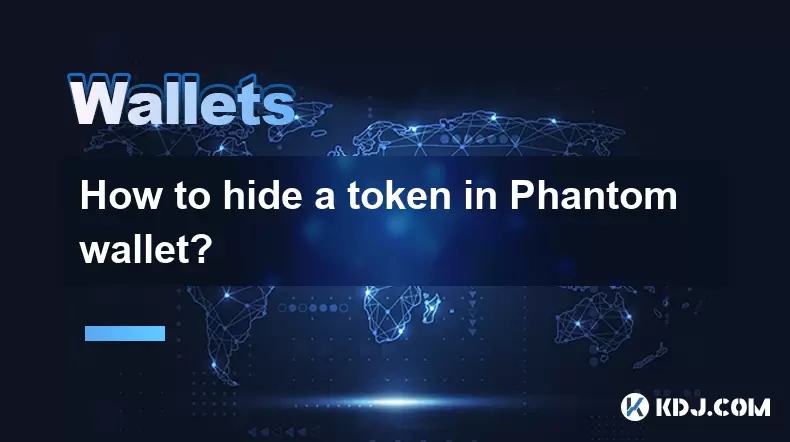
How to hide a token in Phantom wallet?
Jul 01,2025 at 05:49pm
Understanding the Phantom Wallet InterfacePhantom wallet is a popular non-custodial wallet used primarily for interacting with the Solana blockchain. It allows users to store, send, receive, and manage various tokens, including both fungible and non-fungible tokens (NFTs). Before attempting to hide a token, it's essential to understand how the wallet in...
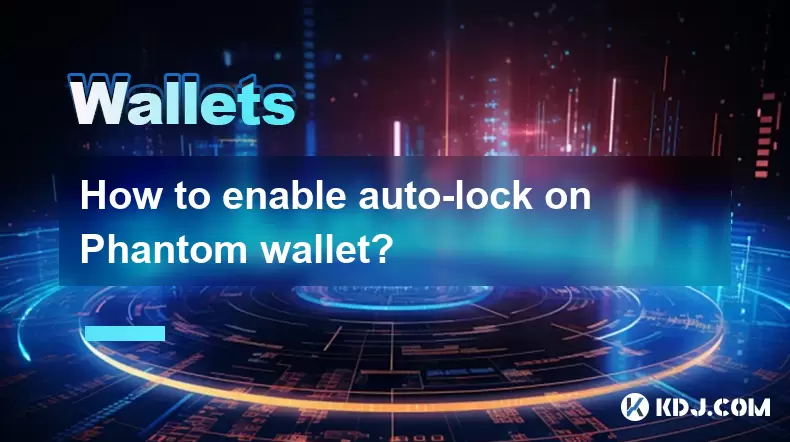
How to enable auto-lock on Phantom wallet?
Jul 01,2025 at 04:01pm
What is Auto-Lock in Phantom Wallet?Phantom wallet is a popular non-custodial cryptocurrency wallet used primarily for interacting with the Solana blockchain. One of its security features includes the ability to set an auto-lock timer, which ensures that the wallet locks itself automatically after a period of inactivity. Auto-lock enhances security by p...
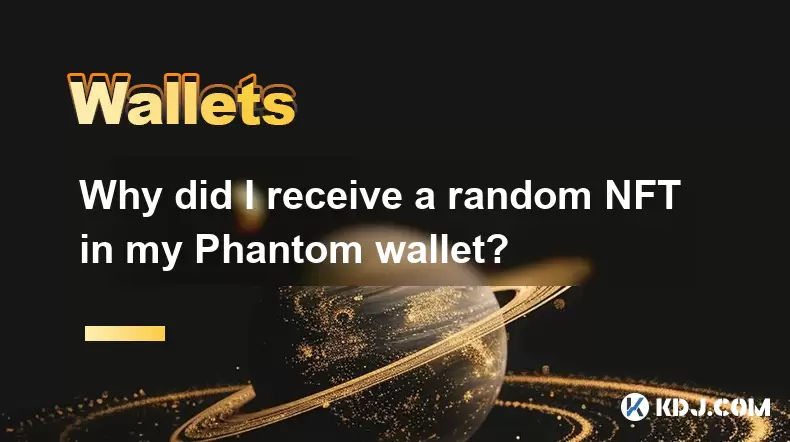
Why did I receive a random NFT in my Phantom wallet?
Jul 01,2025 at 09:00pm
Receiving an Unexpected NFT in Your Phantom WalletIf you've recently opened your Phantom wallet and noticed an unfamiliar NFT appearing in your collection, you're not alone. Many users have reported receiving random or unsolicited non-fungible tokens, often without any prior interaction with the project or sender. This phenomenon has become increasingly...
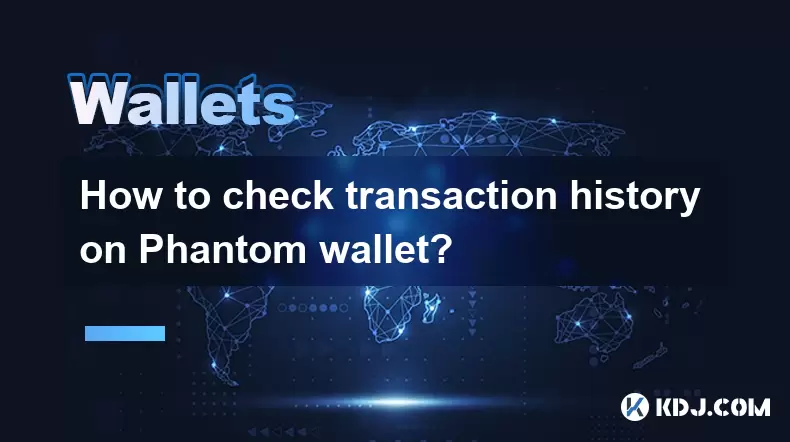
How to check transaction history on Phantom wallet?
Jul 01,2025 at 07:49pm
What Is Phantom Wallet?Phantom wallet is a popular non-custodial cryptocurrency wallet primarily used for interacting with the Solana blockchain. It allows users to store, send, receive, and manage their Solana-based tokens and NFTs securely. One of the essential features of any crypto wallet is the ability to check transaction history. Understanding ho...
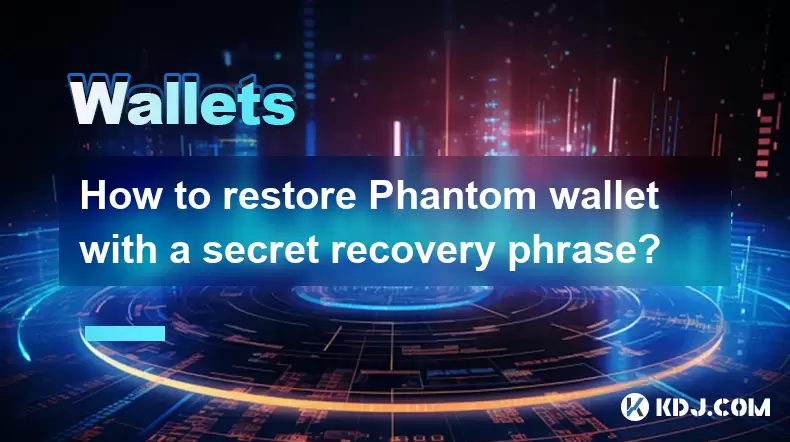
How to restore Phantom wallet with a secret recovery phrase?
Jul 01,2025 at 02:56pm
What is a Phantom wallet and why might you need to restore it?Phantom is a popular non-custodial cryptocurrency wallet primarily used for interacting with the Solana blockchain. It allows users to store, send, receive, and stake SOL tokens as well as manage NFTs and other SPL tokens. Since Phantom wallet is non-custodial, users are solely responsible fo...
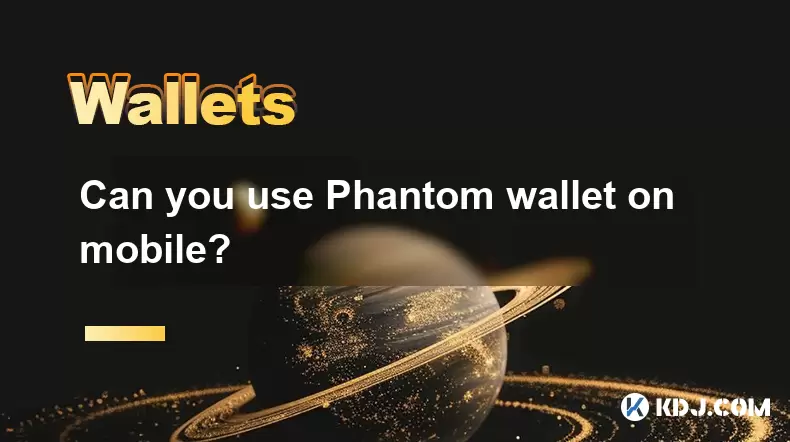
Can you use Phantom wallet on mobile?
Jul 01,2025 at 06:07pm
Understanding Phantom Wallet and Its Mobile CompatibilityPhantom wallet is a non-custodial cryptocurrency wallet primarily designed for interacting with the Solana blockchain. Initially developed as a browser extension, Phantom has expanded its functionality to include mobile platforms. This means users can access their Solana-based assets on mobile dev...

How to hide a token in Phantom wallet?
Jul 01,2025 at 05:49pm
Understanding the Phantom Wallet InterfacePhantom wallet is a popular non-custodial wallet used primarily for interacting with the Solana blockchain. It allows users to store, send, receive, and manage various tokens, including both fungible and non-fungible tokens (NFTs). Before attempting to hide a token, it's essential to understand how the wallet in...

How to enable auto-lock on Phantom wallet?
Jul 01,2025 at 04:01pm
What is Auto-Lock in Phantom Wallet?Phantom wallet is a popular non-custodial cryptocurrency wallet used primarily for interacting with the Solana blockchain. One of its security features includes the ability to set an auto-lock timer, which ensures that the wallet locks itself automatically after a period of inactivity. Auto-lock enhances security by p...

Why did I receive a random NFT in my Phantom wallet?
Jul 01,2025 at 09:00pm
Receiving an Unexpected NFT in Your Phantom WalletIf you've recently opened your Phantom wallet and noticed an unfamiliar NFT appearing in your collection, you're not alone. Many users have reported receiving random or unsolicited non-fungible tokens, often without any prior interaction with the project or sender. This phenomenon has become increasingly...

How to check transaction history on Phantom wallet?
Jul 01,2025 at 07:49pm
What Is Phantom Wallet?Phantom wallet is a popular non-custodial cryptocurrency wallet primarily used for interacting with the Solana blockchain. It allows users to store, send, receive, and manage their Solana-based tokens and NFTs securely. One of the essential features of any crypto wallet is the ability to check transaction history. Understanding ho...

How to restore Phantom wallet with a secret recovery phrase?
Jul 01,2025 at 02:56pm
What is a Phantom wallet and why might you need to restore it?Phantom is a popular non-custodial cryptocurrency wallet primarily used for interacting with the Solana blockchain. It allows users to store, send, receive, and stake SOL tokens as well as manage NFTs and other SPL tokens. Since Phantom wallet is non-custodial, users are solely responsible fo...

Can you use Phantom wallet on mobile?
Jul 01,2025 at 06:07pm
Understanding Phantom Wallet and Its Mobile CompatibilityPhantom wallet is a non-custodial cryptocurrency wallet primarily designed for interacting with the Solana blockchain. Initially developed as a browser extension, Phantom has expanded its functionality to include mobile platforms. This means users can access their Solana-based assets on mobile dev...
See all articles

























